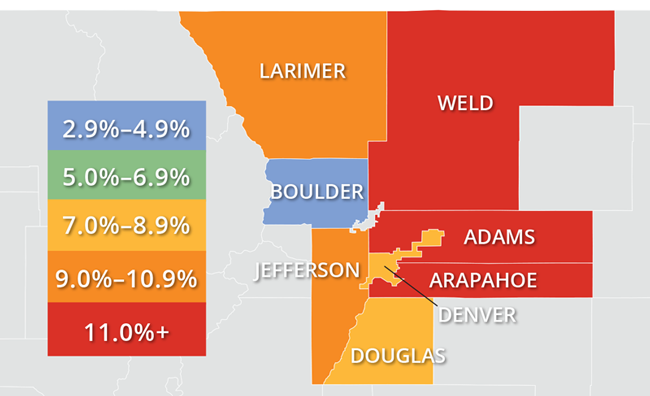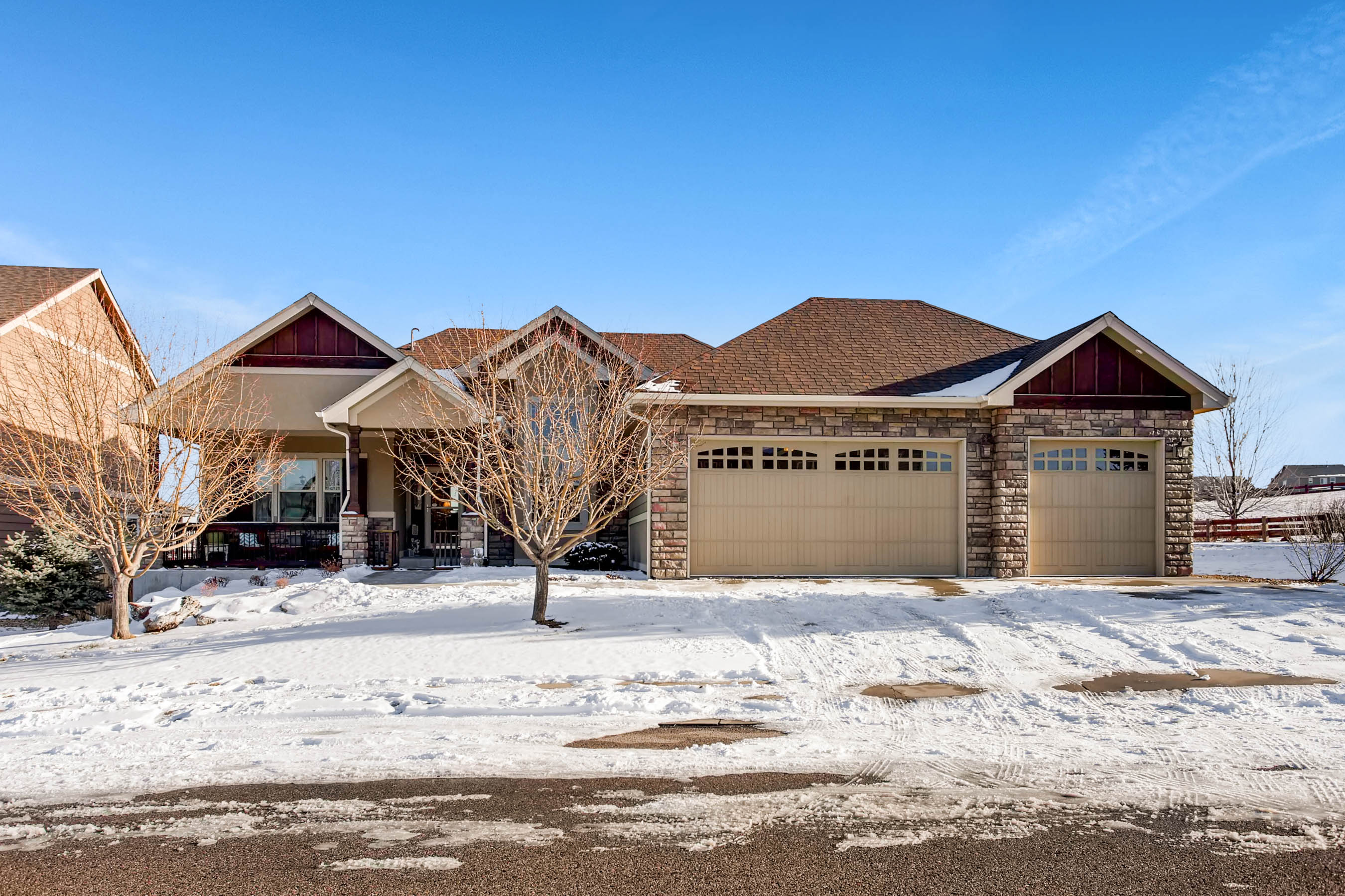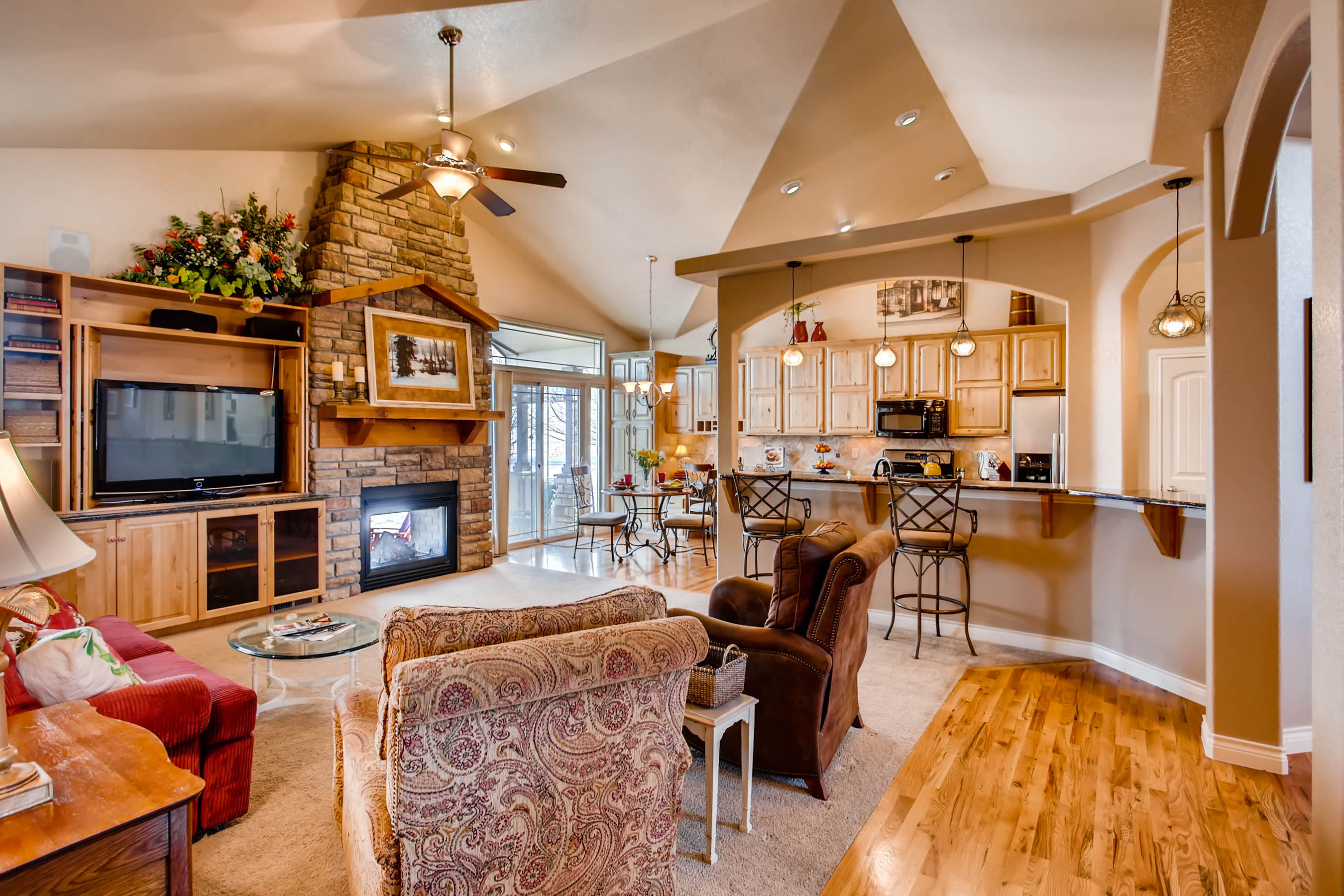Colorado Real Estate Market Update

This analysis of the Metro Denver and Northern Colorado real estate markets is provided by Windermere Real Estate Chief Economist Matthew Gardner. We hope that this information may assist you with making better-informed real estate decisions. For further information about the housing market in your area, please don’t hesitate to contact us.

ECONOMIC OVERVIEW
Colorado added 45,300 non-agricultural jobs over the past 12 months, a growth rate of 1.7%. Although that is a respectable number, employment growth has been trending lower in 2017 as the state reaches full employment. Within the metropolitan market areas included in this report, there was annual employment growth in all areas other than Grand Junction, where employment was modestly lower. There was solid growth in Greeley and Fort Collins, where annual job growth was measured at 4% and 2.7%, respectively.
In November, the unemployment rate in the state was a remarkably low 2.9%, down from 3% a year ago. The lowest reported unemployment rates were seen in Fort Collins and Boulder, where only 2.5% of the labor force was actively looking for work. The highest unemployment rate (3.7%) was in Grand Junction.
The state economy has been performing very well, which is why the wage growth over the past year has averaged a very solid 3.3%. I expect the labor market to remain tight and this will lead to wages rising at above-average rates through 2018.
HOME SALES ACTIVITY
- In the fourth quarter of 2017, there were 14,534 home sales—a drop of 2.0% compared to a year ago.
- Sales again rose the fastest in Boulder County, which saw sales grow 17.9% versus the third quarter of 2016. There were also reasonable increases in Weld and Larimer Counties. Sales fell in all other counties contained within this report because there is such a shortage of available homes for sale.
- As I discussed in my third quarter report, sales slowed due to the lack of homes for sale. The average number of homes for sale in the markets in this report is down by 8.2% from the fourth quarter of 2016.
- The takeaway is that sales growth has moderated due to the lack of homes for sale.

HOME PRICES

- With continued competition for the limited number of available homes, prices continued their upward trend. Average prices were up 9.8% year-over-year to a regional average of $431,403, which was slightly higher than the third quarter of 2017.
- There was slower appreciation in home values in Boulder County, but the trend is still positive.
- Appreciation was strongest in Weld County, which saw prices rise 14.3%. There were also solid gains in almost all other counties considered in this report.
- The ongoing imbalance between supply and demand persists, which means we can expect home prices to continue appreciating at above-average rates for the foreseeable future.

DAYS ON MARKET
- The average number of days it took to sell a home rose by two days when compared to the fourth quarter of 2016.
- Homes in all but three counties contained in this report took less than a month to sell. Adams County continues to stand out, where it took an average of just 21 days for homes to sell.
- It took an average of 29 days to sell a home last quarter. This is up nine days over the third quarter of 2017.
- Housing demand remains strong in Colorado and this will continue with well-positioned, well-priced homes continuing to sell very quickly.

CONCLUSIONS

This speedometer reflects the state of the region’s housing market using housing inventory, price gains, home sales, interest rates, and larger economic factors.
For the fourth quarter of 2017, I have chosen to leave the needle where it was in the previous quarter. Listings remain scarce, but this did not deter buyers who are still active in the market. As much as I want to see more balance between supply and demand, I believe the market will remain supply-constrained as we move toward the spring, which will continue to heavily favor sellers.

Matthew Gardner is the Chief Economist for Windermere Real Estate, specializing in residential market analysis, commercial/industrial market analysis, financial analysis, and land use and regional economics. He is the former Principal of Gardner Economics, and has more than 30 years of professional experience both in the U.S. and U.K.
Three Projects, Three Ways: Valentine’s Gifts for Your Loved Ones

Love it, or hate it, Valentine’s Day is fast approaching! If you want to create a thoughtful gift for a loved one (or for yourself because you TOTALLY deserve it), try one of these easy, inexpensive, do-it-yourself Valentine’s Day ideas!
Three-dimensional flower art:

The ladies at “A Beautiful Mess” have amazing craft ideas, so we decided to try out their flower collage. The results are so fun!
Supply list:
A favorite family picture- blown up to 5*7 or larger
Fabric flowers; you can find these at a local craft store. For a fun touch, pick up some fabric butterflies too
Hot glue gun and glue sticks
A shadow box or a picture frame with the glass popped out
Directions:
Let inspiration be your guide; mock up your design before breaking out the glue gun
Glue flowers around the frame
Let the glue dry and then display your work of art!
Difficulty level: 1
A heart shaped picture collage:

Do you have so many favorite photos that you can’t pick just one? Are you an Instagram addict? Then this fun project is for you. You can use as many pictures as your frame will fit.
Supply list:
A picture frame
A piece of cardstock or paper cut to fit your frame
Cardstock cut into a stencil heart shape
A pile of your favorite photos
Scissors
Craft glue or scrapbooking adhesive
Fancy accent paper (optional)
Directions:
Decide the quantity of photographs you want to display
Arrange your photos on your blank sheet to determine the best placement
Cut each photo into the same size heart (use a stencil heart or heart shaped paper punch for this)
Arrange your pictures on the card stock
If you want to add some dimension, cut out hearts from the fancy accent paper to display behind your photos
Once everything is exactly how you like it, glue it all down
Let everything dry and finish by adding your frame!
Difficulty level: 2
The writing’s on the wall

Do you have a favorite quote about love? Make a modern wall hanging with some simple tools and your favorite words!
Supply list:
A wood frame for stretching canvas (can be found online or your local craft store)
Dark denim (enough to fit over canvas with a couple of extra inches all around)
A white fabric pencil
White fabric paint
Small acrylic paint brushes (with stiff bristles)
Masking tape
A staple gun and staples
A printed template of your favorite quote, as you would like to see it displayed
A window with natural light

Directions:
Tape your printed quote to a window with natural light shining through
Tape your fabric swatch over your template, and position the image/text in the middle of your fabric swatch (dark side facing you)
Using the white pencil, trace the quote and/or image clearly on your dark fabric
Once done, remove your fabric from the window and tape to a flat surface like a desk or table
Use the paint brush and white fabric paint to trace over your white sketches to make your text and/or image visible
Let your masterpiece dry for a few hours (amount of time varies based on the thickness of the applied paint)
Position your fabric over your wooded canvas frame. Make sure the placement is straight and where you want it
Hold your fabric in place over the frame and staple the sides to the back of the wooden frame, checking to make sure your image on the front is straight and the fabric is taught on the frame
If the fabric on the back of your frame is too long, you may want to consider trimming so it doesn’t peek out when the frame is hung on the wall
Find the perfect spot to hang your masterpiece or the perfect person to gift it to!
Difficultly level: 3
Happy Valentine’s Day!
Selling your home: A step-by-step approach


Whether you’re starting a family, moving for your job, getting ready to retire or embarking on a new chapter in your life, when your home no longer suits your current situation, it’s time to think about selling it. Although this can be a bit complicated, with the help of your agent, you can minimize the hassles, get the best possible price, and shorten the distance between “For Sale” and “Sold”.
Price it right
If you want to get the best possible price for your home and minimize the time it stays on market, you need to price it correctly from the beginning. Your agent can give you a clear picture of your particular market and can provide you with a comparative market analysis (CMA). A CMA contains detailed information on comparable homes in your area, including square footage, date built, number of bedrooms, lot size and more. It lists pending sales and houses sold in your area in the past six months, along with their actual sale prices.
By comparing your home to similar homes in your neighborhood and reviewing their list prices and actual selling prices, your agent can help you arrive at a fact-based assessment of your home’s market price.
Prepping your house for sale
You want to make a positive first impression when you list your home for sale. Here are some tips on how to enhance your home’s best features:
Work on your curb appeal
Get rid of moss on your roof. Power wash your front walk, porch, deck and patio. Mow the lawn, trim the hedges, weed the flowerbeds and add spots of color with container plants. Clean all the windows inside and out and repair them if they don’t open and close easily.
Refresh, repair and repaint
This goes for interiors and exteriors. If you see peeling paint, add a fresh coat. If your living room is bright lime green, consider painting it a more neutral shade. Make necessary repairs. You don’t want to turn off a buyer with a dripping faucet, a broken doorbell, a clogged downspout or a cracked windowpane.
Deep-clean, from floor to ceiling
Clean rugs, drapes and blinds and steam-clean carpeting. Get rid of any stains or odors. Make sure kitchen appliances, cupboards and counters are spotless and that bathrooms shine.
Declutter and depersonalize
Clean, light-filled, expansive rooms sell houses. So be sure to downsize clutter everywhere in your home, including cupboards, closets and counters. You might also consider storing some furniture or personal items to make rooms look more spacious. Take advantage of views and natural light by keeping drapes and blinds open.
Make an impact on the market
If you want to sell your home, you need to go where the buyers are, and today they’re on the Internet. According to the National Association of REALTORS®, in 2012 90 percent of homebuyers used the Internet as an information source, and for 41 percent of homebuyers it was the first step in the home-buying process.
By working with your agent, you can list your home on Windermere.com and other relevant websites. He or she will put together a listing with attractive photos, an appealing description and all the information a potential buyer needs. Your agent will also market your house, which may include advertising, direct mail and open houses.
Show your house
After you’ve taken care of all the repairs and cleaning tasks outlined above, your home is ready for its close-up: an open house. It’s actually best for you and your family to leave when potential buyers are present so they can ask your agent questions. But before you go, you might want to:
· Take your pets with you
· Open the shades and turn on the lights
· Light a fire in the gas fireplace
· Bake cookies
· Keep money, valuables and prescription drugs out of sight
Be flexible in negotiating
If you get offers below your asking price, there are a number of strategies you can try in your counteroffer. You could ask for full price and throw in major appliances that were not originally included in the asking price, offer to pay some of the buyer’s fees, or pay for the inspection. You could also counter with a lower price and not include the appliances. If you receive multiple offers, you can simply make a full-price counter.
Your agent can suggest other strategies as well and help you negotiate the final price.
If your house doesn’t sell or you’ve received only low-ball offers, ask your agent to find out what these prospective buyers are saying about your house. It might reveal something you can consider changing to make your house more appealing in the future.
Breeze through your inspection
When a buyer makes an offer on your home, it’s usually contingent on a professional inspection. A standard inspection includes heating and cooling, interior plumbing and electrical systems; the roof, attic and visible insulation; walls, ceilings, floors, windows and doors; and the foundation, basement and visible structure. The inspector will be looking for cracks in cement walls, water stains and wood rot.
You can always opt for having an inspection done prior to putting your house on the market, so you can address any potential problems in advance. Your agent can give you several recommendations for qualified inspectors in your area.
Close with confidence
Whether this is your first time or your tenth, your agent can help guide you though the complex process of selling a home. Moreover, he or she can answer any questions you may have about legal documents, settlement costs and the status of your sale.
Your agent’s expertise, resources and extensive network also work for you when you’re buying your next house. Even if you’re moving out of the area, your agent can refer you to a professional agent in your new community.
If you have questions about the buying or selling process, or are looking for an agent in your area, we have professionals that can help you. Contact us here.
Beautiful Piece Of Land In A Great Location

https://www.youtube.com/watch?v=ejYXlpXJc7I
Giant lot with a great view, overlooking Boedecker Reservoir and the mountains! No one will ever block your view. Build your dream home with options for a walk-out basement.
For more information, please visit: http://windermerenoco.com/listing/74902951 or call Kyle Basnar at (970) 460-3033.
Short Sale FAQs: Understanding the Short Sale Process

What Is A Short Sale?
A short sale is the sale of a property for less than what the owner still owes on the mortgage. A short sale is an alternative to foreclosure when a homeowner needs to sell and can no longer afford to make their mortgage payments. The lender agrees to accept less than the amount owed to pay off a loan now rather than taking the property back by foreclosure and trying to sell it later. Lenders agree to a short sale because they believe it will net them more money than going forward with a lengthy and costly foreclosure process.
Can Any Real Estate Agent Effectively Handle My Short Sale?
No. A short sale is a very complicated real estate transaction and one that has very important implications for you. More than any other type of residential real estate transaction, a short sale should be handled only by a real estate broker who has substantial experience with the short sale process , and a strong track-record of success in negotiating short sales for their clients. You wouldn’t have your family doctor perform heart surgery. And, you shouldn’t expect any real estate broker to be qualified to handle this highly complex real estate transaction for you.
Why Should I Choose A Short Sale Over Foreclosure?
Whether you should do a short sale or let your property go to foreclosure depends on several factors. In most instances, a short sale makes more sense than foreclosure. In general, when you want to obtain a loan to purchase a property in the future, more opportunities will be available to you if you do a short sale. And, contrary to popular belief, you can be current on your payments and still do a short sale. In fact, if you are current on your mortgage through a short sale, you can qualify for an FHA loan afterwards without any waiting periods. The same option will not be available following a foreclosure.
While doing a short sale will negatively affect your credit, there are many benefits to choosing a short sale over foreclosure. With a short sale, you are in control of the sale, not the bank. You may sleep better at night knowing who is buying your home, and you can spare yourself the social stigma of foreclosure.
Every homeowner’s situation is different, so we always recommend that you speak with a real estate attorney that can advise you on the legal and tax implications for your circumstances.
How Do I Know If I Qualify For A Short Sale?
If you owe more than your house is worth and can’t afford your mortgage payments, you may qualify for a short sale. Every situation is unique, but in general the basic criteria for qualifying for a short sale are:
- You need to sell your home.
- You owe more on your mortgage than your home is worth.
- You have a personal financial hardship that will prevent you from making future payments. (Examples of hardship include loss of job, divorce, death of a spouse and medical emergency or illness.)
When calculating if your house is worth less than the amount owed on the loan, you should deduct out what you would pay in real estate commissions, closing costs, and state excise taxes to sell your home.
Will I Get Any Money From The Sale?
Unless specifically authorized through a federally-sanctioned program such as HAFA, when a lender approves a short sale, they typically require that the borrower (seller) not receive any money from the sale of the property since the lender is going to take a loss on the loan.
How Long Does A Short Sale Take?
The short sale process is complicated and time-consuming. It can take several weeks, or even months, to get a short sale approved. Many lenders have several layers of management, insurers, and investors that will have to be satisfied before a short sale is approved. As a homeowner, it is important to be patient during this long process. It is also critical that you work with a short sale negotiator who is familiar with the various requirements of individual lenders to ensure that the process moves as quickly as possible.
Is There Enough Time To Do A Short Sale Before A Foreclosure?
Maybe, maybe not. Just starting a short sale will not automatically stop a foreclosure. However, many times a lender can be convinced to postpone the foreclosure to let a short sale negotiation take place. So, while there are no guarantees, it does not hurt to try.
Does A Short Sale Always Work?
No, there is no guarantee that this will work. Once you fall behind on your loan, the lender can proceed to foreclosure if they choose to. But typically, lenders prefer not to foreclose and, if effectively presented with smart alternatives, they will often agree to a short sale rather than foreclose. If a short sale is attempted but doesn’t work, your house will likely go to foreclosure.
I Have More Than One Mortgage On My House. Can I Still Do A Short Sale?
Yes. Each mortgage can be negotiated individually. However, multiple mortgages make a short sale more complicated and time-consuming. Not only do you need the cooperation of the first lender, the second mortgage holder needs to agree to a short sale as well.
What Is A Release?
A lender may offer to “release” its security interest against the property in exchange for less than the total amount of the note. A release will allow the property to be sold without paying off the obligations of the note. However, the note is not satisfied. The advantage of a release is it allows the property to be sold and helps you avoid a foreclosure. The disadvantage is the remaining debt on the property (sometimes called a deficiency) still exists. You are still liable for the note. In other words, you still owe the money. In reality, it’s not likely that the lender will pursue the deficiency unless you have other significant assets. Furthermore, if you don’t attempt a short sale and the property goes to foreclosure, you can be liable for the full amount of remaining debt on any additional mortgages beyond your first mortgage.
What Is A Satisfaction?
A lender may agree to accept less than it is owed as complete and total satisfaction of the debt and release its lien against the property. Your note and obligation to the lender are satisfied for less than you owe. When the property is sold, the debt is paid off completely. Sometimes short sale negotiations are successful in obtaining complete satisfaction. Sometimes all that can be obtained is a release.
Are There Tax Consequences?
When a lender cancels or forgives your debt, the tax laws may consider the forgiven debt as taxable income. If a lender agrees to a satisfaction, the Mortgage Forgiveness Debt Relief Act of 2007 provides that debt forgiveness of up to $2 million is not considered taxable income if:
- The house has been used as your principal place of residence for at least two of the previous five years.
- The debt has been used to buy, build, or make substantial improvements to the home.
Home equity loans where the money was not used to buy, build, or improve the home do not qualify for the exclusion. Neither do mortgages for second homes or rental properties. The law has been extended to include debt forgiven through 2013.
There are additional tax considerations to keep in mind. A debt cancellation will affect your property’s cost basis. Insolvency or bankruptcy may also alleviate some of the tax burdens of a debt cancellation resulting from a short sale. You should always confirm tax matters with your tax professional.
Can I Keep The House Through A Short Sale?
The purpose of a short sale is to get the property sold, so you do not keep the house. Just as in a normal sale, you will be moving, typically when the sale closes. Some sellers choose to move before the house closes. You will not be allowed to remain in the house. If your intention is to remain in your house, you should consider other options besides a short sale.
Download a copy of Short Sale Frequently Asked Questions [PDF].

Richard Eastern is a Windermere broker in Bellevue, WA and co-founder of Washington Property Solutions,a short sales negotiating company. Since 2003 he has helped more than 900 homeowners sell their homes. A Bellevue native and a University of Washington grad, Richard is an avid sports fan and a devoted Little League and basketball coach. You can learn more about Richard here or at www.washortsales.com.
Increasing Your Home’s Curb Appeal


First impressions are extraordinarily powerful, and your house is no exception. When others approach it for the first time, does it strike them as clean, inviting and well maintained? In real estate, these all-important qualities are known as “curb appeal.” If you plan to put your home on the market, or simply want it to look its best, here are some ideas that will ensure your home makes a positive first impression.
Clean, clean, clean
Start by cleaning and tidying your driveway, walkway, front yard, and front porch. Pressure washing can make concrete and aggregate surfaces look like new; pressure washers are also ideal for cleaning stains from gutters and removing moss from patios and decks.
In your yard, keep the grass neatly trimmed, and edge your paths and walkways for a meticulously groomed look. Keep the beds weed-free, and trim trees and bushes as needed. Remove and replace any dead or struggling plants. If you are selling your home, it’s a smart investment to have a professional gardener make things picture-perfect, and then you can maintain the look yourself.
On your front porch, remove any cobwebs and sweep away all traces of dirt, leaves and pet hair. Clean your light fixtures and bulbs, and be sure your windows are sparkling clean. Wipe down your front door and polish your door hardware.
Repair and update
Fix or replace loose latticework, gently tap down nail heads that have worked loose from your siding or decks, and ensure that downspouts are attached and secure. It might make sense to replace and outdated front door, or at least give it a fresh coat of paint and update the handle and kick plate. If your exterior light fixtures were fashionable 25 years ago, they’re undoubtedly out of date now. Visit a home-improvement store and choose something more contemporary.
If your exterior paint is in good shape, light pressure washing will make it look almost new, and a fresh coat of pain on just the trim and shutters can provide a quick face lift. On the other hand, shabby paint dramatically devalues a home. If repainting is necessary, use a mainstream color that fits in with your neighborhood.
Keep it simple, clean and classic
If your home is on the market, be ruthless with clutter. Remove anything that distracts from the home itself, including children’s toys, bicycles, garden hoses and tools. You want your home to appeal to as many people as possible. When potential buyers step onto your property, they need to be able to imagine it as their own.
Create a welcoming entry
Your front porch and/or entryway provide an opportunity to make visitors feel comfortable and welcome. Beautiful pots overflowing with flowers appeal to everyone, and a trickling water feature can create a serene atmosphere. And if there’s room, a small table and chairs on the front porch are very inviting. Finally, if your doormat has worn out its welcome, it’s time to purchase a new one.
Get a fresh point of view
It can be surprisingly difficult to view your home objectively and to see it as others do. One helpful trick is to shoot photos or video; for most people, this technique helps them see their home from a fresh perspective. By all means, ask your agent for a professional opinion. He or she can give you a checklist of recommended tasks that will strengthen your home’s curb appeal.
There’s only one chance to make a first impression
Curb appeal is more important than you might imagine. We’ve seen buyers make a snap judgment before they step out of the car. If it’s a negative first impression, that’s hard to overcome no matter how nice the home is inside. One the other hand, when a home is charming and cleaned and cared for on the outside, buyers can be so positively affected that once they’re inside, they are less critical of an outdated kitchen or a small bathroom. Strong curb appeal can help cement a positive opinion.
If you have questions about getting your home ready to sell, or are looking for an agent in your area we have professionals that can help you. Contact us here.
How to Choose the Right Home


As the market starts heating up and real estate becomes a popular dinner party topic again, it’s easy to get so caught up in the fever of searching and offers that we forget why we were buying a home in the first place. When you’re hearing about “inventory shortages” and “bidding wars” it’s important not to fall into the trap of settling, buying for the wrong reasons, or even overspending.
When is the “Right Time to Buy”?
I constantly see information out there telling buyers and sellers that it is the “right time” or the “wrong time” to buy or sell a home. Of course you should take things like rising interest rates or rising or falling prices into consideration, but the most important thing to ask yourself is, “Is it the right time for me?” Are you ready to stay in one place for a while? Are you feeling like your employment position is stable? How about your relationship? If you’re barely making ends meet with a job you hate and your relationship with your partner is on the rocks, it’s probably not the time to buy, no matter what interest rates are doing. Having enough money to comfortably afford your home is more important than buying when everyone else is.
What are your values?
Why do you want to buy a house, anyways? Do you imagine yourself spending your weekends working in your yard every weekend? Is your idea of fun tearing apart a bathroom and putting it back together piece by piece? Or are you more interested in a lifestyle, living close to your work and walking to the grocery store? If you love going out with your friends or traveling for long periods, buying a house with extensive landscaping or an endless list of things needing to be remodeled and upgraded is probably not a good fit. Know what kind of life you want to live in your home BEFORE you find a place, and stay true to that as you search.
Find a REALTOR who gets you.
When you’re looking for an agent to help you find a home, keep looking till you find someone you like and trust. Buying a home can be hugely stressful, and being able to have open and honest conversations with an agent who gets you will make the whole process much easier.
Everyone is happy that the real estate market is in recovery and buying a house is an amazing experience. Just make sure you know what you want your home to be FOR YOU and stay true to your own personal American Dream.
 Marguerite Giguere is a buyers agent specializing in Downtown Tacoma. She blogs regularly at GetRealTacoma.com.
Marguerite Giguere is a buyers agent specializing in Downtown Tacoma. She blogs regularly at GetRealTacoma.com.
Alluring Ranch With Designer Finishes

Featuring 3 Bedrooms, 2 Bathrooms And An Open Floor Plan!
https://www.youtube.com/watch?v=RKtd6941WYo
Look no further! Custom ranch with an open floor plan in the popular Water Valley development. Enjoy the Colorado lifestyle on your over-sized covered patio with built-in gas grill and even a dual-sided fireplace. Large master with 5-piece bath and walk-in closet. Comfortable main floor living, open to kitchen with lots of storage and counter space. Full, unfinished basement for future expansion. Bring your golf cart and enjoy the Water Valley lifestyle!
For more information, please visit: http://windermerenoco.com/listing/74845848 or call Wendy Roberts at (970) 460-3033.
What is Modern?

Sleek design, open floor plans, and great natural lighting are all appealing characteristics of modern architecture. Over the years, modern design concepts in home building have become more popular, as is the resurgence of interest in modern real estate. More companies, like 360 modern, are specializing in modern properties. Modern homes vary greatly in style; however, they have some unifying qualities that distinguish them from other properties built over the last 60 years. Here are some characteristics often found in modern homes:
Clean geometric lines: The core of modernist values is the simplification of form. Modernist homes have a very ‘linear’ feel with straight lines and exposed building materials. Furnishings and adornment reflect this value, incorporating vibrant, geometric and abstract designs.
Modern materials: Large windows are abundant in modern architecture, allowing light to fill and expand the interior space, bringing the natural world indoors. Generally all exposed building materials are kept close to their natural state, including exposed wood beams, poured concrete floors or counter tops, stone walls and stainless steel.
Modern homes are well suited for technological and green upgrades, including eco-friendly building materials and energy efficient practices. Flat roofs accommodate solar power. Energy efficient appliances work with the aesthetics of modern homes. Modernist landscaping need not require water-thirsty lawns, but instead can reflect local flora.
Post-and-beam structure: One classic element in modern architecture is the exposed wood posts and ceiling beams. This style of building has been around for thousands of years; however, modern homes really emphasize the structure, rather than hiding the bones behind drywall. In new modern homes the post-and-beam structure can be made out of concrete, iron or other materials. The highly visible horizontal and vertical beams reinforce the clean geometric lines of the space.
Low-pitched gable or shed roof: One of the most differential characteristics of modern homes than more traditional home design is the shape of the roof. Classic modern homes on the west coast generally have a flat or low-pitched roof, highly influenced by architect Joseph Eichler. New urban homes also leverage roof tops for outdoor entertaining space.
Open floor plan: Modern design strives to “open” the space by eliminating enclosed rooms. For example opening the kitchen and dining room into an open living space, allowing the ‘rooms’ to flow into one another.
Large windows: Natural light and the incorporation of natural elements are important aspects of modern home design. Large, floor-to-ceiling windows illuminate the open space and highlight the natural landscape. Some new modern homes have adjusted the large windows to open, diminishing the barrier between the indoors and out.
Incorporation of outdoor elements: Frank Lloyd Wright, one of the pioneering modernist architects, incorporated the natural setting into his architecture, most famously with Falling Water. Outdoor elements are incorporated into modern architecture in many ways; through large windows, landscaped terraces, and patios, and through use of natural and organic materials in building including stone walls, and more.
Minimalism: With open and connected modernist spaces, careful curation of furniture, adornments, and household objects is important to preserving the modernist aesthetic. Generally, modernist homes have art and furniture that reflects the clean geometric lines and the natural materials of the architecture, leaving less space for clutter. Minimalist philosophies of few household items that serve both form and function work well within this design and architectural style.
 Facebook
Facebook
 X
X
 Pinterest
Pinterest
 Copy Link
Copy Link









